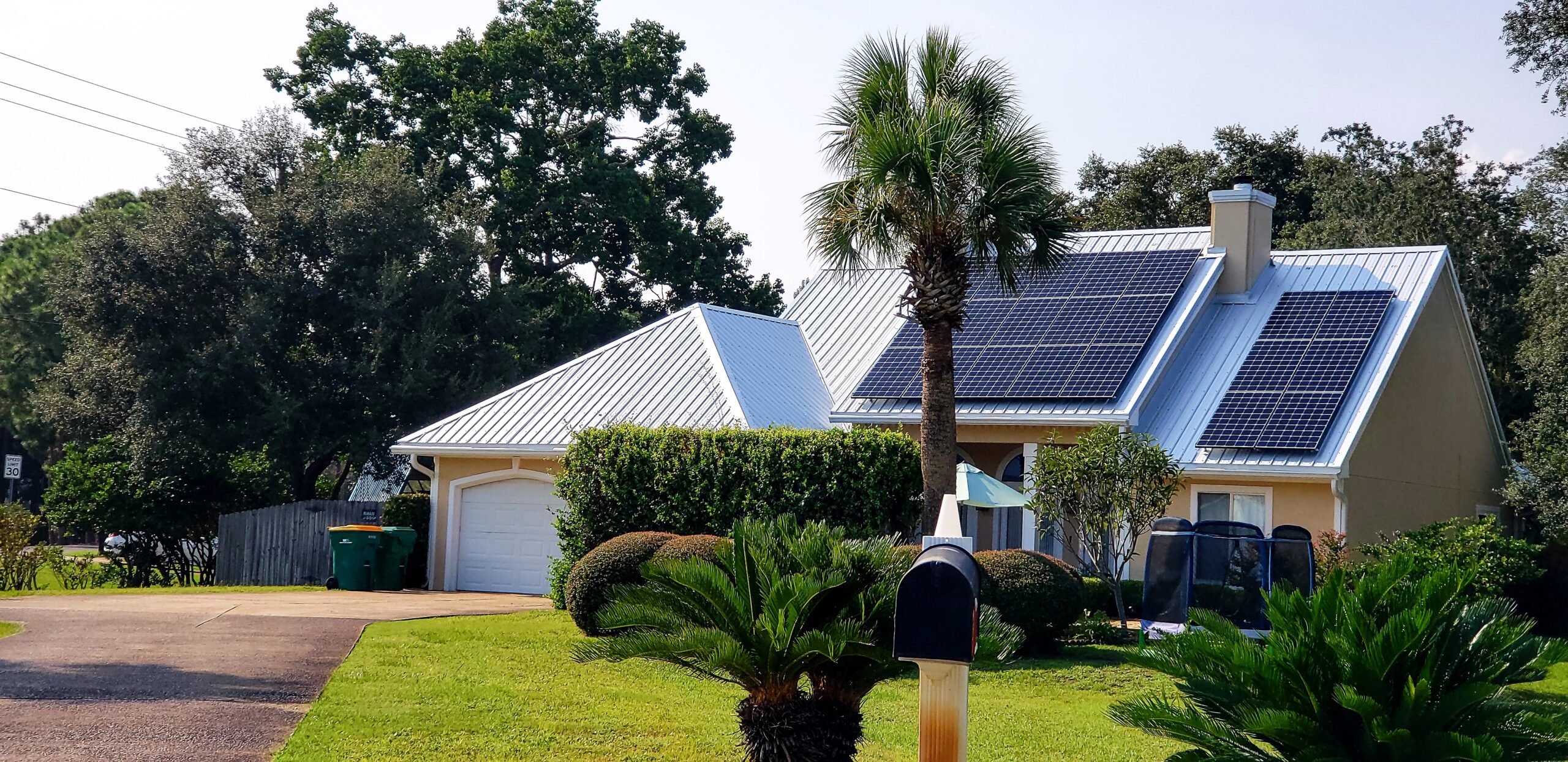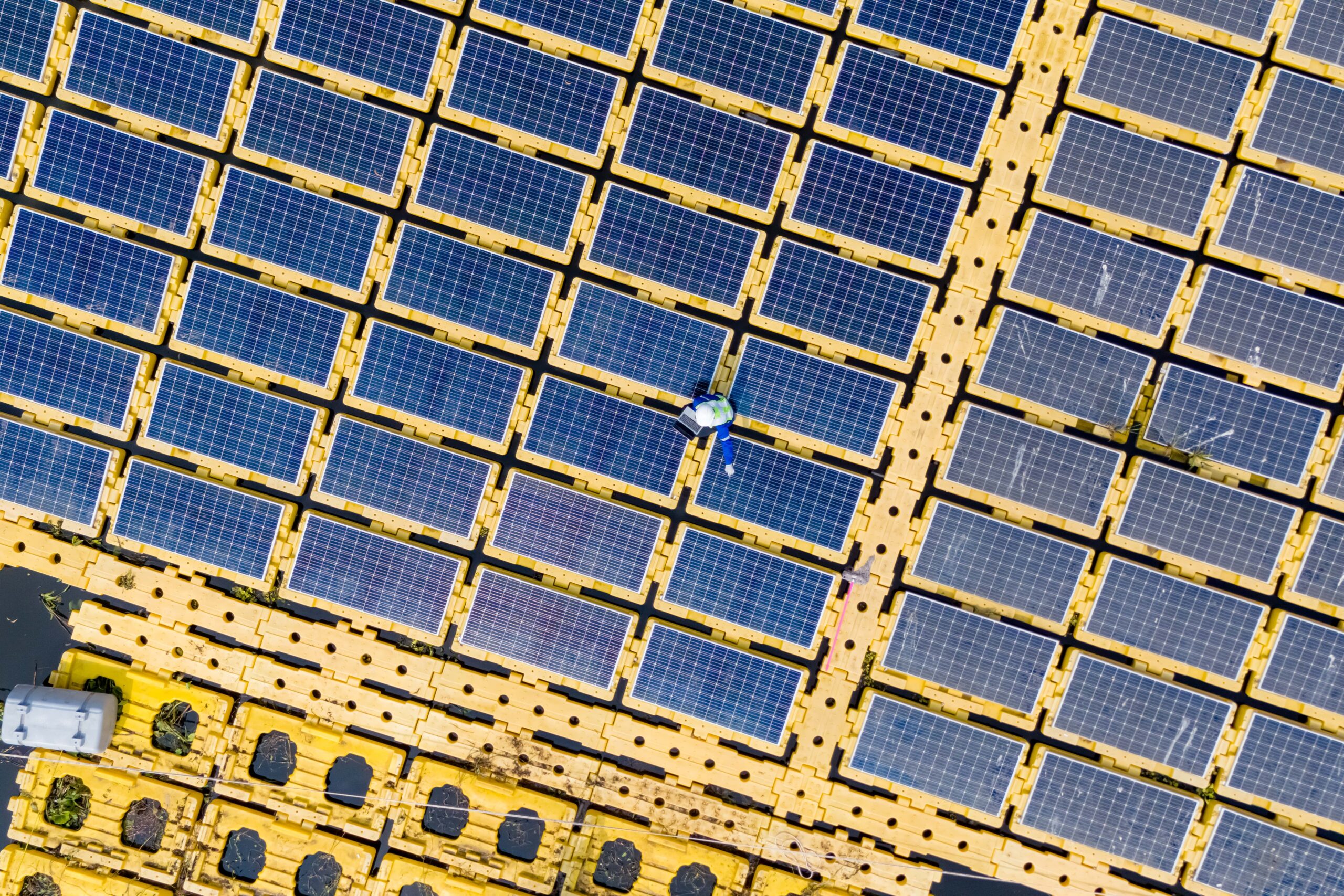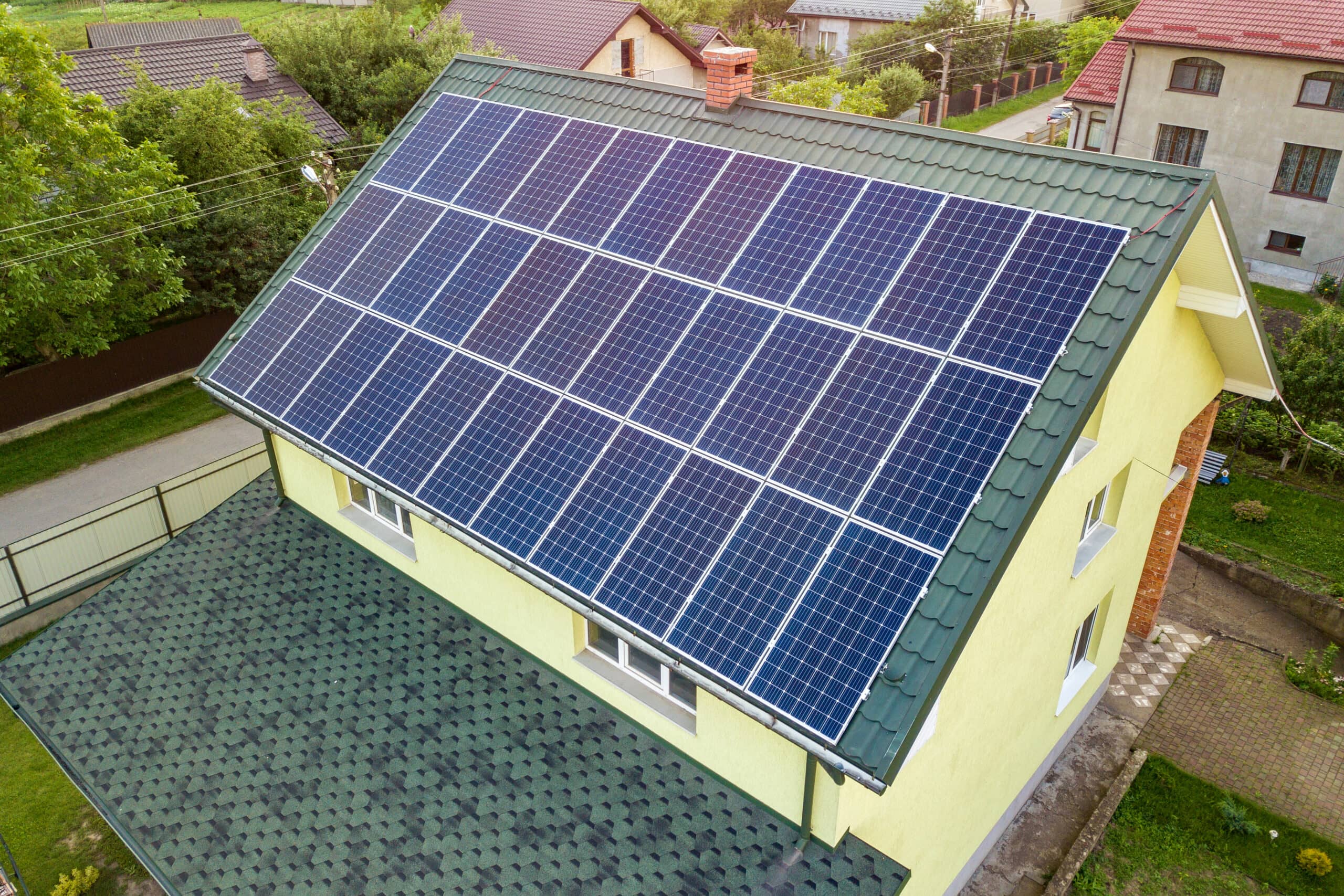With the rising interest in sustainable energy sources, solar power has emerged as a popular choice for environmentally conscious homeowners. One common question is whether solar panels can effectively power an entire home. In this article, we will analyze the feasibility, requirements, benefits, and potential challenges associated with powering a home solely through solar energy. Let’s shed some light on the possibilities and considerations of harnessing the sun’s energy to meet all our household power needs.
Solar panels work by harnessing the sun’s energy and converting it into electricity through a process called the photovoltaic effect. When sunlight hits the solar panels, the photovoltaic cells within them generate direct current (DC) electricity. This electricity is then converted into usable alternating current (AC) electricity by an inverter, essential for powering most household appliances.
A standard solar power system comprises solar panels, an inverter, and, optionally, battery storage for storing excess energy generated during the day for use at night. Also, homes can be connected to the grid, allowing them to draw electricity from the grid when solar production is low and feed excess electricity back to the grid when production exceeds consumption.
Various types of solar panels are available, with monocrystalline, polycrystalline, and thin-film panels being the most common. Monocrystalline panels are known for their high-efficiency rates and sleek appearance, while polycrystalline panels are more affordable but slightly less efficient. Thin-film panels are flexible and lightweight, making them suitable for certain applications. Efficiency rates vary among panel types, with monocrystalline panels typically having the highest efficiency, followed by polycrystalline and thin-film panels.
When considering solar power for your home, it’s crucial to understand your energy consumption patterns. On average, a typical household consumes around 10,649 kilowatt-hours (kWh) of electricity per year. This can vary based on factors such as the size of the home, the number of occupants, the energy efficiency of appliances, and the local climate.
To calculate the number of solar panels needed to meet a household’s energy demands, we must consider the average daily energy consumption, peak sunlight hours, and the geographic location. On average, a 1 kW solar panel system produces about 4 kWh per day; by dividing the average daily energy consumption by the daily production per panel, we can estimate the number of panels required. However, it’s essential to adjust this calculation based on peak sunlight hours and the specific geographic location to account for variations in solar exposure.
To fully meet your home’s energy requirements with solar panels, we recommend using either of the following two system configurations: on-grid and off-grid systems.
On-grid systems involve using solar panels in combination with the electrical grid. With this setup, excess energy generated by the solar panels during the day can be fed back into the grid for credits or compensation. This allows homeowners to draw electricity from the grid when solar production is low and to utilize solar power when it’s abundant.
On the other hand, off-grid systems rely entirely on solar power and battery storage. In this setup, all the home’s energy needs are met by solar panels, which charge batteries during the day to provide power at night or during periods of low sunlight. Off-grid systems require careful consideration of energy storage capacity to ensure uninterrupted power supply.
The size and installation space requirements for a solar array capable of powering an entire home depend on factors such as the home’s energy consumption, geographic location, roof orientation, and shading. On average, a home may need a solar array of 20-25 solar panels (approximately 5 kW) to meet its energy needs. The installation space required for this array size can range from 300 to 500 square feet, depending on the efficiency of the panels and the available sunlight exposure.
There are numerous benefits that come with powering your home with solar panels. Some of which are:
1. Environmental Benefits: By using solar panels to power your home, you contribute to a significant reduction in your carbon footprint. Solar energy is a clean and renewable source of power that produces no greenhouse gas emissions during operation. By harnessing the sun’s energy, you help combat climate change and promote sustainability.
2. Financial Benefits: One of the most appealing aspects of solar power is the potential for financial savings. By generating your electricity from solar panels, you can reduce or even eliminate your monthly electricity bills. Additionally, many regions offer incentives such as tax credits, rebates, and net metering programs, which can lower the upfront costs of installing solar panels and increase your long-term savings.
3. Increased Energy Independence and Resilience: Powering your home with solar panels enhances energy independence by reducing reliance on the traditional grid. During power outages or grid failures, solar-powered homes can continue to operate, providing a reliable source of electricity. This increased resilience can be crucial during emergencies or natural disasters when access to electricity is essential.
These benefits make solar power a compelling choice for homeowners looking to save money, reduce their environmental impact, and enhance their energy security.
Transitioning to solar energy for residential use presents various challenges and considerations that homeowners must carefully evaluate before switching to solar. These factors can significantly impact the feasibility and success of integrating solar panels into your home. Let’s explore some key points in more detail:
The cost of solar panels, installation expenses, and additional equipment like batteries can pose a financial hurdle for homeowners. While the long-term savings are substantial, they require careful consideration and financial planning.
Ensuring the proper maintenance and understanding of the lifespan of solar panels are crucial for maximizing their efficiency and durability. Regular upkeep, such as cleaning and potential repairs, is essential to extend the panels’ lifespan and optimize energy production.
Solar energy generation fluctuates due to weather conditions and seasonal changes. Factors like cloud cover and shorter daylight hours can affect the energy produced, emphasizing the need for backup power solutions and grid connectivity to ensure a reliable energy supply.
The installation of solar panels can alter the visual aesthetics of a property, potentially conflicting with homeowner association (HOA) regulations. As homeowners, you must consider the visual impact of solar panels on your homes and review any HOA guidelines to ensure compliance with regulations.
Considering these challenges and considerations is essential for homeowners looking to harness the benefits of solar energy while navigating potential obstacles. By addressing these factors thoughtfully, you can make informed decisions regarding integrating solar panels into your homes.
As technology continues to evolve, advancements in solar panel efficiency and battery storage are revolutionizing the renewable energy sector. Improved efficiency in solar panels means higher energy production from the same surface area, making solar energy more accessible and cost-effective for homeowners. Additionally, advancements in battery storage technology enhance the ability to store excess power generated during peak sunlight hours for use during periods of low solar production, increasing energy self-sufficiency and grid independence.
Moreover, emerging trends in solar energy, such as community solar and solar panel leasing options, are expanding access to solar power for a broader range of homeowners. Community solar projects allow individuals to benefit from solar energy without installing panels on their property, promoting shared renewable energy resources within communities. Solar panel leasing options provide an alternative for homeowners who may not be able to afford the upfront costs of solar panel installation, enabling more people to participate in the renewable energy transition.
Government policies and incentives play a crucial role in driving the adoption of residential solar power. Several provinces across Canada offer incentives such as tax credits, rebates, and net metering programs to encourage homeowners to invest in solar energy systems. These policies not only make solar power more financially attractive but also contribute to environmental sustainability by reducing reliance on fossil fuels and lowering carbon emissions.
By embracing these technological advances and leveraging emerging trends in solar energy, homeowners can take advantage of a greener, more sustainable future while benefiting from cost savings and energy independence. Government support and incentives further incentivize the transition to residential solar power, paving the way for a cleaner and more resilient energy landscape.
Powering an entire home with solar panels is increasingly feasible and practical due to technological advancements that enhance energy production and storage efficiency. With improvements in solar panel efficiency and battery storage, you can generate and store sufficient energy to meet your household needs, even during periods of low sunlight. Additionally, the availability of financing options, government incentives, and emerging trends like community solar make solar power a viable and attractive option for residential energy consumption.
By harnessing the sun’s power, you would reduce your carbon footprint, contribute to environmental sustainability and benefit from long-term cost savings and energy independence. Embracing solar energy empowers individuals to take control of their energy consumption, reduce reliance on traditional energy sources, and play a part in building a cleaner and greener future for generations to come.




